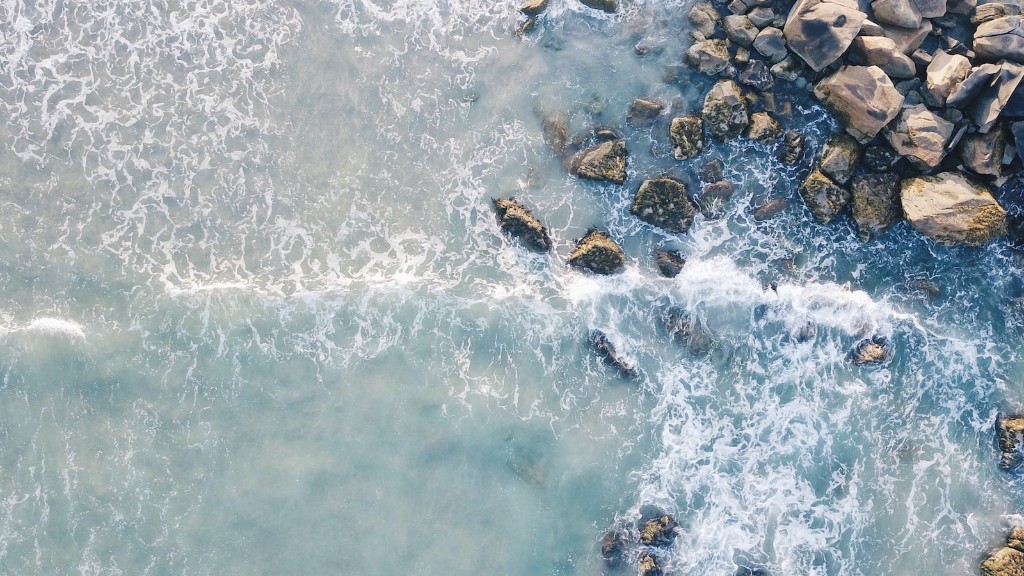Background Information
The South China Sea is a body of water that borders the coastal regions of several Southeast Asian countries, including the Philippines and China. Since the late 1990s, the South China Sea has been the site of a complicated dispute, with competing claims from China, the Philippines, Vietnam, and Malaysia. The region has also been a subject of great international interest due to its economic and strategic importance. The South China Sea contains tremendous natural resources, and is a major shipping lane for international trade. As a result of the ongoing dispute, various countries have established military outposts in the region, leading to a tense and fragile security situation.
Relevant Data
According to the U.S. Energy Information Administration, the South China Sea is estimated to contain 11 billion barrels of oil, 190 trillion cubic feet of natural gas, and vast amounts of marine life. Additionally, international trade passing through the South China Sea is estimated to total about $5 trillion annually. All of these resources and revenue streams are at the center of the dispute.
International Law
The ongoing dispute has been complicated by a clash of laws. China claims the South China Sea as part of its exclusive economic zone, which would give it exclusive rights to natural resources and trade revenues in the region. However, this claim conflicts with the United Nations Convention on the Law of the Sea, which allows nations to claim exclusive control over waters only up to 200 nautical miles from their coastlines. This legal standoff has further intensified the dispute.
Experts’ Perspectives
Experts have suggested various ways to resolve the South China Sea dispute. Some experts have suggested that an international tribunal should be formed in order to establish a fair and equitable solution. Such a tribunal would need to take into account the interests of all parties involved in the dispute, and attempt to create a solution that is acceptable to all. Other experts have suggested that a regional agreement should be established, whereby China and other countries in the region can work together to manage the South China Sea region in a peaceful and mutually beneficial manner.
Tools of Conflict Resolution
Conflict resolution experts have suggested a variety of techniques to resolve the South China Sea dispute. These techniques include negotiation, mediation, arbitration, and cooperative problem-solving. Negotiation involves the parties in the dispute negotiating directly with one another in order to reach a mutually agreeable solution. Mediation involves the use of outside third parties, such as international tribunals, to facilitate negotiations and help the parties reach an agreement. Arbitration involves the use of international tribunals to make binding decisions regarding the dispute. Finally, cooperative problem-solving involves the use of negotiations, trust-building measures, and cooperative projects to build trust and understanding between the parties in the dispute.
Environmental Considerations
Environmental considerations are also at the heart of this dispute. The South China Sea is considered to be of great ecological importance, with widespread coral reefs and an abundance of marine life. It is also a vital source of food for millions of people in the region. Thus, any solution must take into account the importance of protecting the environment. Additionally, a solution must preserve the rights of fishermen and other people dependent on the resources of the South China Sea for their livelihoods.
Positive Diplomatic Initiatives
Various positive diplomatic initiatives have been undertaken in order to find a peaceful resolution to the South China Sea Dispute. In 2002, China, the Philippines, and Vietnam signed the Declaration on the Conduct of Parties in the South China Sea, which established an agreement to peacefully resolve the dispute and refrain from provocative acts. The goal of this agreement is to reduce tensions in the region and create a framework for dialog and cooperation.
A Way Forward
It is apparent that there is no easy solution to the South China Sea dispute. All parties in the dispute must carefully consider the interests of their neighbors, the importance of international law, and the needs of the environment. It is clear that the dispute will only be resolved through a process of dialogue, mutual understanding, and good faith negotiation.
Role of International Organizations
International organizations such as the United Nations have an important role to play in helping to resolve the South China Sea dispute. The UN can provide a forum for dialog, support fact-finding missions, and work to foster cooperation between the parties involved. Additionally, the UN can act as a mediator in an effort to reach a negotiated settlement.
Role of Third Parties
Third parties such as the United States, Japan, and the European Union can also play an important role in helping to resolve the South China Sea dispute. These countries can provide support, expertise, and diplomatic pressure to help bring the parties to the negotiation table. Additionally, they can provide tangible incentives, such as economic development funds, to countries willing to take a constructive role in the resolution of the dispute.
Evolving Dynamics
The dynamics of the South China Sea dispute are constantly evolving. As new actors enter the dispute and interests shift, the situation becomes increasingly complex. This highlights the need for constant dialogue and diplomatic efforts to find a resolution to the dispute. It is clear that the only way to resolve the dispute is through a process of compromise, negotiation, and trust-building.


